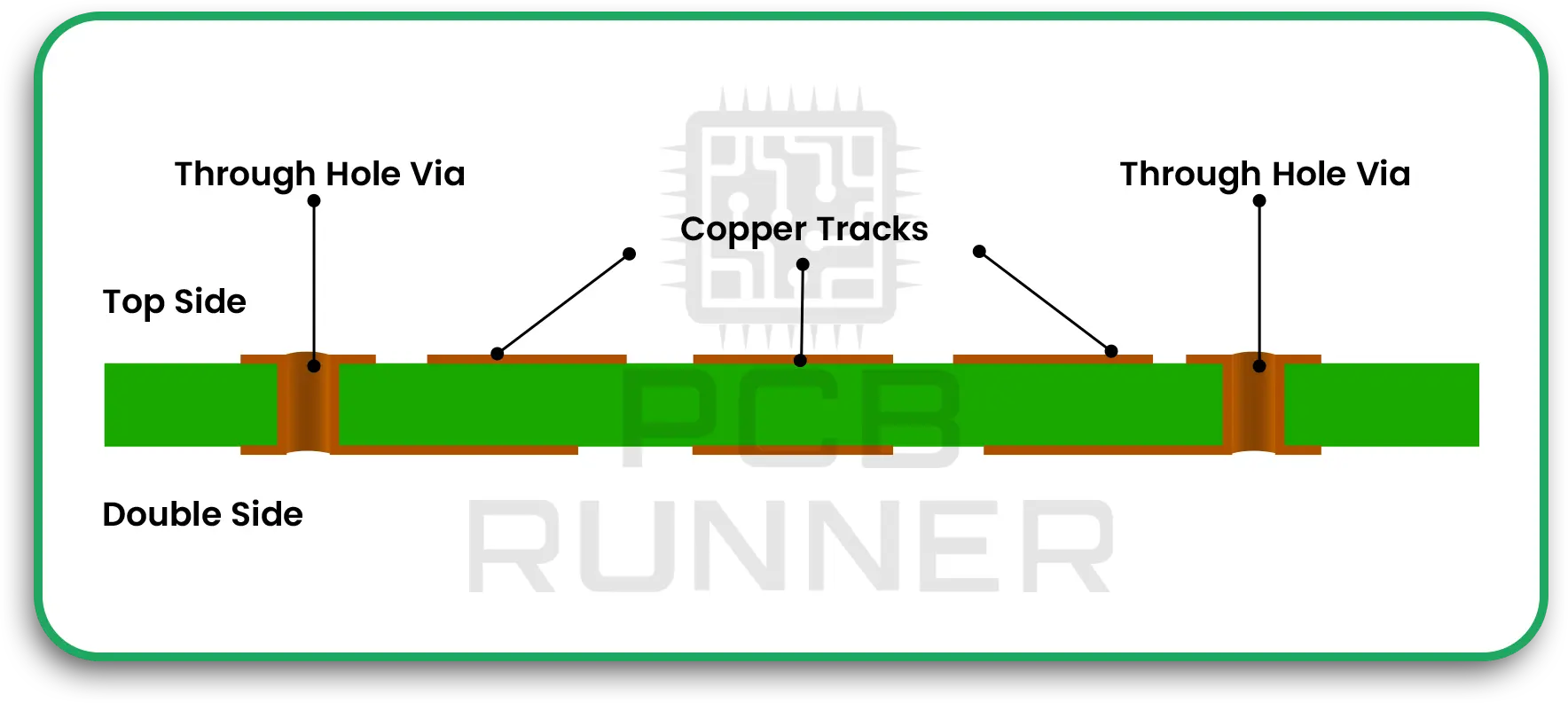

A double-sided PCB is a printed circuit board with copper layers on both the top and bottom. This means you can place components on both sides. That gives you more space and more options when designing your circuit. Unlike a single-sided board, which only has copper on one side, a double-sided PCB lets you connect parts in a more compact and flexible way.

If you’re designing something like a smart device or sensor that needs to be small but fast, a double-sided PCB board can help. Here’s why many people choose them:
Double-sided PCB (Printed Circuit Board) assembly is an essential technique in modern electronics. It involves placing electronic components on both the top and bottom sides of the board. This approach offers several practical benefits that make it a popular choice for many applications. Let’s break down why double-sided PCB assembly is so useful:
One of the biggest advantages is better performance. When signals don’t have to travel as far across the board, resistance is lower, and the speed of signal transmission increases. This means that your device can operate more efficiently and respond faster. For example, in devices like smartphones or gaming consoles, quick data transfer is crucial, and double-sided PCBs help achieve that.
Another major benefit is the ability to create smaller designs. By utilising both sides of the PCB, you can fit more components into a limited space. This is particularly valuable for compact gadgets like smartwatches, fitness trackers, or advanced medical devices, where saving space without sacrificing performance is essential. As technology becomes more compact, double-sided PCB assembly allows engineers to meet these size constraints effectively.
In addition to size and performance, double-sided PCBs also offer improved heat management. Since components are distributed on both sides, heat can spread out more evenly, preventing hotspots and reducing the risk of overheating. This balanced heat dissipation ensures that the board stays reliable over time, even in demanding applications like industrial machinery or high-performance computing devices.
Moreover, double-sided PCB assembly provides greater flexibility when designing circuit layouts. The extra surface area on both sides gives engineers more options for routing power and signal paths. This means that complex circuits can be designed with fewer compromises, allowing for more efficient and organised component placement. As a result, products can be developed with enhanced functionality while maintaining a sleek, compact form factor.
Double-sided PCBs show up in a lot of products. Here are some common examples:
When you’re ready to build a double-sided board, working with the right team is key. Not all PCB manufacturers are the same. A skilled PCB manufacturer can help you avoid problems and build a board that really works.
Here’s what to look for:
You want someone who listens to your needs and delivers solid work.
No two projects are exactly alike. That’s why going custom can be a big help. A custom printed circuit board fits your exact needs, from the shape of the board to the thickness of the copper.
Custom boards let you:
This kind of flexibility means your design can be faster, smaller, and tougher.
Before you make 1,000 boards, it’s smart to test one. That’s what a double-sided PCB board prototype is for. A prototype lets you see how the board fits, works, and holds up in real use.
Fast prototyping helps you catch mistakes early. Good pcb manufacturers can get you a working sample fast, so you stay on schedule.
Time is important. Delays cost money. That’s why it’s helpful to work with a team that offers fast PCB prototyping. Speed helps you:
Some of the best pcb manufacturers offer 24–72 hour turnaround times on prototypes. That gives you more time to focus on the rest of your project.
| Feature | Single-Sided PCB | Double-Sided PCB | Multilayer PCB |
| Component Mounting | One side only | Both sides | Multiple inner layers |
| Cost | Low | Medium | High |
| Complexity Supported | Low | Medium | High |
| Space Efficiency | Low | High | Very High |
| Used In | Simple gadgets | Phones, tools | Servers, routers |
As you can see, double-sided boards are the perfect middle ground. They offer more power than basic boards but don’t cost as much as multilayer ones.
Sometimes, a large double-sided PCB needs to be broken into smaller parts. That’s where PCB jump scoring helps. It’s a method where grooves are made on both sides of the board so you can snap parts apart cleanly.
Jump scoring is useful if:
Ask your PCB assembler if they offer this service, especially for high-volume jobs.
Once your design is ready, a pcb assembler takes the parts and puts them on your board. You want someone with experience in double sided PCB assembly.
Look for:
A reliable assembler means fewer headaches and better boards.
Double-sided PCBs offer a smart way to make your devices smaller and more powerful. They’re great for phones, tools, cars, and more. You get better signal flow, smaller size, and improved heat control.
To get started, work with experienced printed circuit board manufacturers. Whether you need a custom printed circuit board, a fast double sided PCB board prototype, or jump scoring, the right partner will guide you every step of the way.
2025-2028(c)Copyright PCBRPT Ltd., Call us +86 75529752926 Mon-Fri: 24 hours, Sat: 9am-6pm, GMT+8
Visit our office: Room 401, Building 5, Xunyuan Zhichuanggu Industrial Park, Fengtang Avenue, Fuhai Street, Bao'an District, Shenzhen, Guangdong
Visit our factory: AD6 District, Dongsheng Industrial Park, Meizhou City, Guangdong Province
Support by : Zhdr.Net | SiteMap